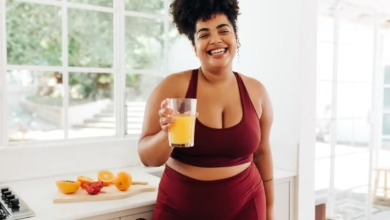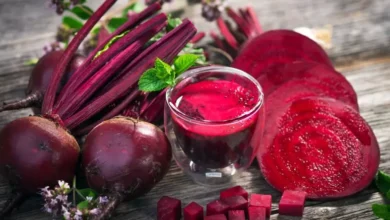How to Eat More Vegetables (Even If You Don’t Like Them)
We all know that vegetables are packed with nutrients, fiber, and antioxidants. They support digestion, immunity, heart health, and more. Yet many people still struggle to eat enough veggies—especially if they didn’t grow up loving the taste or texture.
The good news? You don’t need to force down bowls of plain broccoli. With a few creative strategies, you can eat more vegetables in a way that feels enjoyable, not like punishment.
This article is your guide to eating more vegetables, even if you think you don’t like them.
Why Vegetables Are So Important
Vegetables are nutritional powerhouses. They’re low in calories but rich in:
- Fiber, which supports digestion and keeps you full
- Vitamins and minerals like vitamin C, potassium, folate, and magnesium
- Antioxidants, which fight inflammation and cell damage
- Water, which keeps you hydrated and helps with satiety
Eating more vegetables is linked to a lower risk of heart disease, stroke, type 2 diabetes, and certain cancers. They’re also essential for maintaining a healthy gut and glowing skin.
How Much Should You Eat?
The general recommendation is at least 5 servings of fruits and vegetables per day, with a focus on vegetables.
That means about:
- 2½ cups of vegetables daily for adults
- Or, half your plate filled with veggies at most meals
If you’re not close to that right now, don’t worry. The goal is progress, not perfection.
Tips to Eat More Vegetables (Without Hating It)
1. Start Small and Build Up
If you rarely eat veggies, don’t overwhelm yourself. Start by adding just one extra serving per day—like a handful of spinach in your smoothie or a few slices of cucumber on your sandwich.
As your taste buds adjust, increase slowly.
2. Blend Them Into Smoothies
One of the easiest ways to eat more vegetables without even tasting them is by adding them to fruit smoothies.
Great options include:
- Spinach
- Kale
- Zucchini
- Cauliflower
- Carrots
- Beets
Pair with banana, mango, berries, or nut butter to mask the flavor.
3. Roast Them for Better Flavor
Roasting brings out the natural sweetness of vegetables and adds delicious caramelized edges.
Try roasting:
- Broccoli
- Cauliflower
- Carrots
- Brussels sprouts
- Sweet potatoes
- Zucchini
Toss with olive oil, salt, pepper, garlic, or your favorite seasoning blend.
4. Add Them to Sauces and Soups
You can sneak veggies into sauces, stews, and soups without changing the flavor much.
Examples:
- Add pureed carrots or spinach into marinara sauce
- Toss chopped bell peppers or mushrooms into chili
- Blend cooked cauliflower into creamy soups
- Add kale to lentil or chicken soup
5. Make Veggie-Based Dips and Spreads
Veggies can be transformed into flavorful dips and spreads that are easy to enjoy.
Try:
- Hummus made with beets or roasted red pepper
- Guacamole with added peas or spinach
- Baba ganoush (roasted eggplant dip)
- Carrot or sweet potato mash
Use as a spread on toast or dip for crackers and veggie sticks.
6. Upgrade Your Snacks
Instead of chips, try:
- Roasted chickpeas
- Baby carrots with hummus
- Sliced cucumbers with tzatziki
- Snap peas or sugar snap beans
- Bell pepper strips with guac
Veggie snacks can be crisp, flavorful, and satisfying.
7. Spiralize or Shred Them
Turning vegetables into noodle-like shapes or shreds can make them more appealing.
Try:
- Zucchini noodles (zoodles)
- Sweet potato spirals
- Shredded cabbage in tacos or sandwiches
- Shredded carrots in salads or wraps
You can even mix them with traditional pasta or rice to ease the transition.
8. Add to Breakfast
Don’t wait for lunch or dinner to start eating veggies.
Easy breakfast ideas:
- Scrambled eggs with spinach and tomatoes
- Veggie-packed omelets
- Avocado toast with arugula or radish slices
- Smoothie with kale or cucumber
- Leftover roasted veggies with eggs
9. Experiment with Herbs and Sauces
If plain veggies turn you off, that’s okay. Add flavor!
Try:
- Lemon juice or balsamic glaze
- Fresh herbs like parsley, dill, or cilantro
- Garlic, onions, ginger
- Soy sauce, hot sauce, tahini, or pesto
Healthy doesn’t have to mean bland.
10. Make It Fun
Presentation matters. Cut veggies into fun shapes, use colorful combinations, or serve them in creative ways like veggie tacos, skewers, or lettuce wraps.
When food looks good, you’re more likely to eat it.
Final Thoughts: Your Taste Buds Can Change
If you don’t love vegetables right now, give it time. Taste buds can adapt—especially when you try new cooking methods and pair veggies with flavors you already enjoy.
Start with one strategy this week. Find one vegetable and one way of preparing it that you actually enjoy. Then build from there.
You don’t need to be perfect—you just need to start. Every extra veggie on your plate is a win.

Hello! My name is Alan Teixeira and I am passionate about helping people live healthier, more balanced lives. From mindful eating to daily habits that promote physical and mental well-being, I believe that small, consistent changes can lead to powerful transformations.
I created this blog to share practical tips, reliable information, and thoughtful insights that can inspire you to take better care of yourself—with balance, mindfulness, and positivity.
If you are looking to improve your health, nourish your body, and build a lighter, more fulfilling routine, you are in the right place. Welcome!





